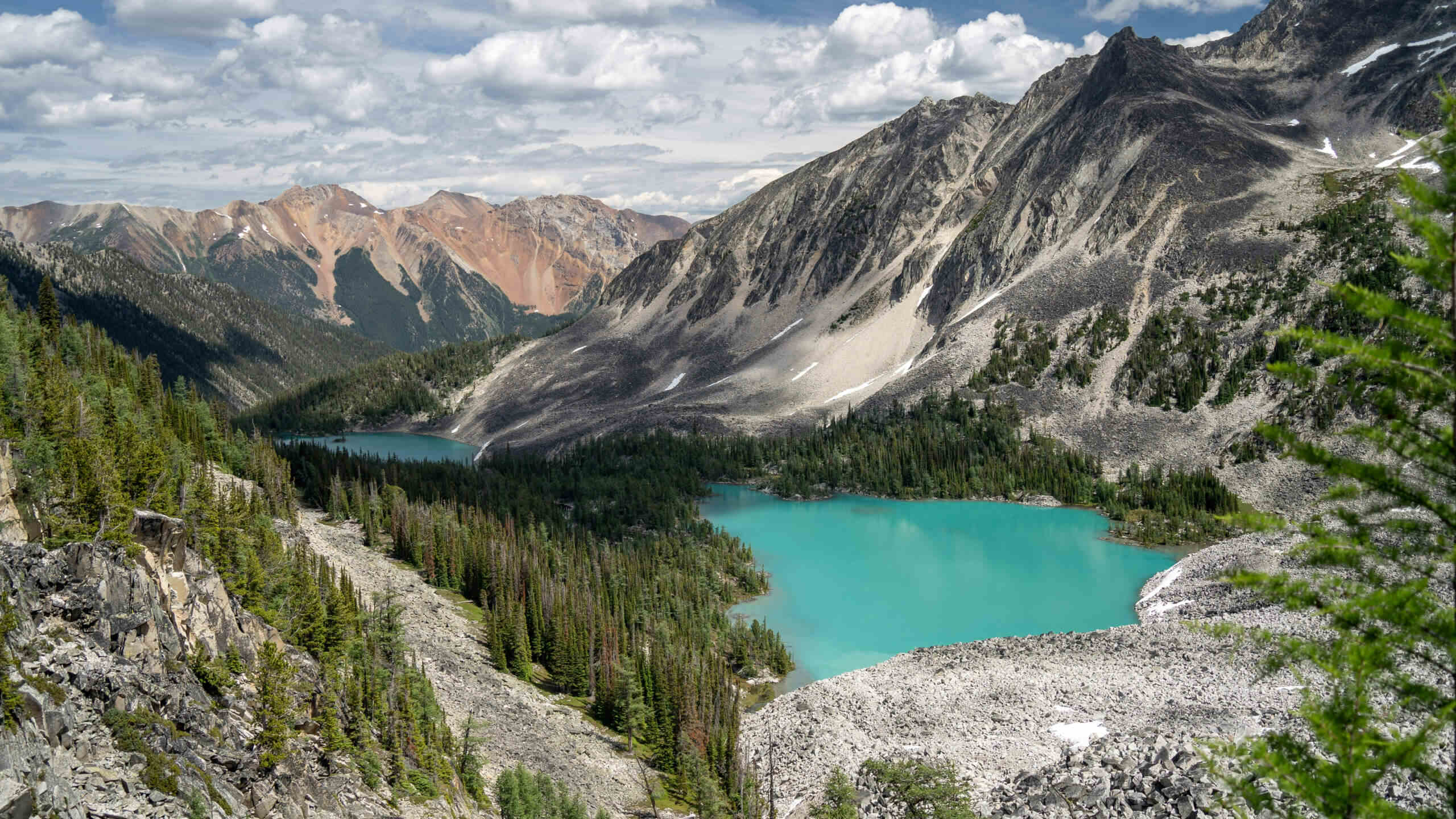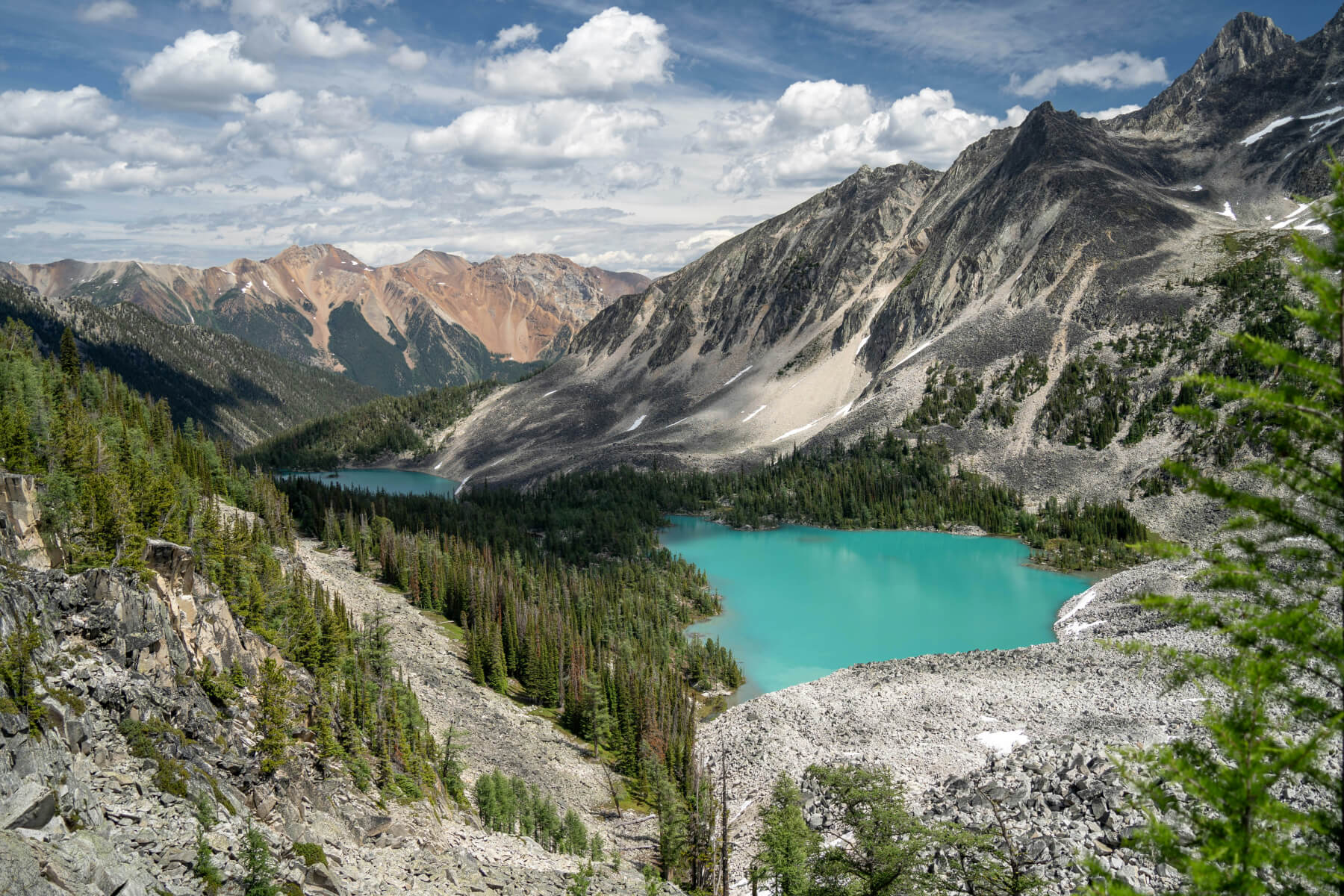Reforestation In
British Columbia
From lush temperate rainforests to wild mountain ranges, stunning glacial lakes, and a rugged coastline, British Columbia supports an abundance of rare plant and animal species — including some of the biggest trees in the world. Not surprisingly, it has the highest biodiversity of species, ecosystems and habitats in Canada. Some of the animals that call B.C. home are grizzly bears, bison, and tufted puffins — plus orcas and humpback whales off the coast.
Despite being a global leader in sustainable forest management, B.C.’s forests face significant threats from drought, land and groundwater changes, disease, insects, and escalating wildfires. Climate change is intensifying these risks; longer, hotter summers result in more droughts and extended wildfire seasons, with dry conditions fueling lightning storms, and strong winds that ignite fires. The 2023 wildfire season saw a record-breaking 2.84 million hectares burned, causing widespread damage and evacuations.

British Columbia Stats
60m
Hectares of forest
60 million hectares (149 million acres) of British Columbia’s forests cover an area equivalent to the combined size of France and Germany.
Forests, British Columbia
43%
old growth
43% of B.C’s forests are considered old growth — spanning around 25 million hectares (62 million acres).
Forests, British Columbia
1/5
of coastal temperate rainforest
B.C. has about 1/5 of the world's remaining coastal temperate rainforest.
Forests, British Columbia
6,500
islands
There are around 6,500 islands off the coast of B.C.
British Columbia | MARINE, UC Santa Cruz
75%
Habitat Loss
At least 75% of California’s original habitat has already been lost.
60%
Of Water
60% of potable water in California is sourced from forested watersheds.
Project Highlights
Reforestation in British Columbia can help restore areas that have experienced significant damage from wildfires, insect infestations, and other challenges. By replanting trees, we can help rebuild ecosystems, support wildlife, and combat climate change. Learn about three recent reforestation projects that planted trees in British Columbia!

Nazko Wildfire Restoration Project
The goal of this project was to reforest areas affected by a severe wildfire in 2017. Several conifer species and one deciduous species were planted in areas where natural regeneration was not occuring. By reforesting these areas, the ecosystem will recover sooner — and the trees will capture atmospheric carbon as they grow.
Yunesit'in rehabilitation
The goal of this project was to create a sustainable landscape. This included measures to reduce forest debris and other natural fuels, lessening the severity of future wildfires. The project also aimed to restore forestland that would otherwise recover slowly after a significant mountain pine beetle infestation.


2 Million Trees for Forest Fire Recovery
In 2017, wildfire devastated a large area of forest. The fire also harmed soils, riparian ecosystems, wildlife, and water quality. The goal of this project is to restore the forest more quickly than natural regeneration would allow. Due to the scarcity of seed trees in the area, it could have taken up to 40 years without help.


